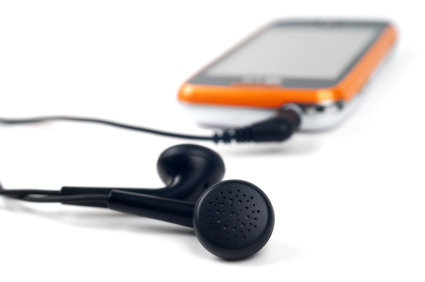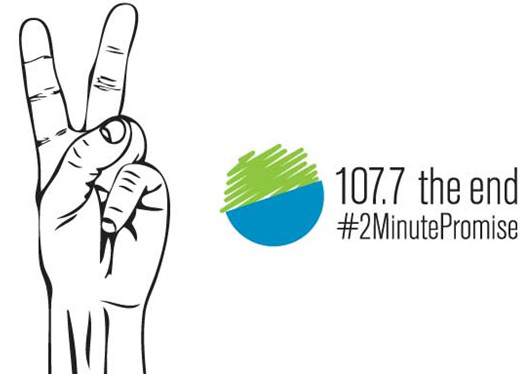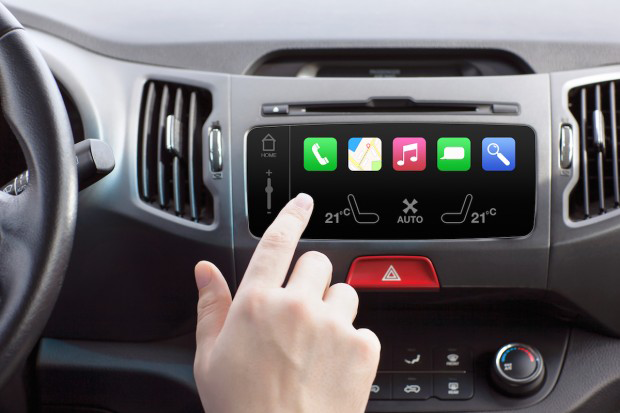 There are a lot of reasons that listeners choose Internet radio, but convenience and personalization are the most often cited. Internet radio’s migration to mobile devices means that music is always with you because your smartphone is always within reach. Quick access to a seemingly unlimited variety of music also adds to the convenience factor. Personalization takes this variety and optimizes it based on a listener’s specific tastes. Convenience and personalization are strong incentives, but there is another factor that must be considered – the ever-present stopset or ad block of several commercials in a row.
There are a lot of reasons that listeners choose Internet radio, but convenience and personalization are the most often cited. Internet radio’s migration to mobile devices means that music is always with you because your smartphone is always within reach. Quick access to a seemingly unlimited variety of music also adds to the convenience factor. Personalization takes this variety and optimizes it based on a listener’s specific tastes. Convenience and personalization are strong incentives, but there is another factor that must be considered – the ever-present stopset or ad block of several commercials in a row.
We tend to think about Internet radio as something listeners are “migrating to” as opposed to “migrating from” broadcast radio. However, listening is an experience that can only accommodate a single audio channel at a time. If someone is listening to Internet radio they are not listening to broadcast radio. Radio broadcasters have long considered the experience of live and local to be their greatest asset in attracting and maintaining audience. That experience is too often undermined by long stopsets of advertisements that motivate listeners to choose another station or another audio channel altogether.
9 to 13 minutes of Ads in a Row
Doug Spero of the News & Observer in Raleigh, North Carolina recently did some primary research on this topic. Mr. Spero suggests he normally listens to satellite radio, but was in a car where his only option was broadcast radio. He says,
I was about half way into my 30-minute trip when this unidentified voice came on and said, “9 in a row” right after this. In radio terms, the phrase “right after this” means you are about to hear a commercial cluster of anywhere from 6 to 13 minutes. For many it is the cue to start hunting for another station. The problem is, as you punch the buttons in rapid fashion, you run out of stations quickly because they all seem to play those dreaded commercials at the same time.
This experience prompted Mr. Spero’s research in three markets: Raleigh-Durham, New York and Los Angeles. He found that across four popular stations in Raleigh-Durham the stopsets ranged from 9-12 minutes. “In L.A., the average was about 9 minutes, but in NY, Z-100 surpassed all others with a 13-minute stopset that I logged in a 3-4 p.m. weekday.” This data could be skewed if the stations selected have a higher than average hourly ad load. However, it is also reasonable to assume this was not the only stopset (ad block) in the hour.
Inside Radio published the results of a survey of radio stations in early 2015 where 20% of respondents confirmed hourly ad loads of over 14 minutes. One-third of these exceeded 16 minutes. A weighted average analysis of the data suggested an industry average of 11.49 minutes per hour so the findings by Mr. Spero could be skewed either by the station selection or seasonality. It could also be that broadcasters are under-reporting actual hourly ad loads. With that said, no one seems surprised at stopsets exceeding 10 minutes. A study by Nielsen, Media Monitors and Coleman Insights from 2011 that addressed audience retention during stopsets only measured up to six minutes. These long stopsets clearly are racking up revenue, but at what cost?
A User Experience Problem
 Some broadcasters recognize they have created a user experience problem. In 2014, KNDD radio in Seattle famously announced “The 2 Minute Promise.” The promise was to run no more than six minutes of ad load per hour and no stopset longer than two minutes. The move was prompted by the results of an extensive listener survey conducted the previous year.
Some broadcasters recognize they have created a user experience problem. In 2014, KNDD radio in Seattle famously announced “The 2 Minute Promise.” The promise was to run no more than six minutes of ad load per hour and no stopset longer than two minutes. The move was prompted by the results of an extensive listener survey conducted the previous year.
Listeners tune in for music or talk and not for the advertisements. At the same time, everyone recognizes that advertising dollars fund broadcast radio operations. There is a balance that must be maintained. When the only competition for listening time was other radio stations applying the same stopset formula, an equilibrium with high ad loads may have been accepted by consumers as the default reality. The competitive landscape has changed. Broadcast radio is still routinely accessed by consumers and has a larger aggregate audience, but Internet radio and streaming services are eroding time spent listening and high ad loads are a risk to chase more time away.
Consumers may complain about 2-3 minutes of ads per hour on Internet radio, but it is about 20% of the broadcast ad load. Over 14 months of tracking Internet radio ads, the longest stopset identified by the XAPPmedia researchers behind Internet Radio Ad Load Report was a mere 90 seconds and stopsets exceeding 60 seconds occurred in fewer than 1% of listening sessions. If ads are well targeted and have solid creative they can enhance the listener experience, but only to a point. This begs the question of whether some Internet radio listeners are more in that “migrating from” broadcast radio camp.
Every broadcaster should consider whether the proportion of ads to content an important element of user experience and if user experience influences listener choice. If the answer to these questions is yes, then long stopsets risk audience erosion at a time when audience choice is growing.
A Confluence of Trends
 The migration of Internet radio to smartphones changed everything. It was a niche product when shackled to a desktop computer. Today, Internet radio access is constrained only by the penetration of smartphones among the population. comScore reported in October that smartphones are now owned by 77% of mobile users or 191 million people in the U.S. This is up 2% from 2014. For smartphone owners, streaming audio access is even more pervasive than broadcast radio because the smartphone is nearby even when a radio is not.
The migration of Internet radio to smartphones changed everything. It was a niche product when shackled to a desktop computer. Today, Internet radio access is constrained only by the penetration of smartphones among the population. comScore reported in October that smartphones are now owned by 77% of mobile users or 191 million people in the U.S. This is up 2% from 2014. For smartphone owners, streaming audio access is even more pervasive than broadcast radio because the smartphone is nearby even when a radio is not.
The growing implication is in the automobile. The increase in Bluetooth connectivity in cars creates competition between smartphone delivered audio content through the in-car speaker system and broadcast radio’s last protected moat. The introduction of digital infotainment dashboards makes this competition even more direct as broadcast radio is placed as an equal option alongside services such as Spotify, Pandora, iHeartRadio and Slacker.
The Opportunity for Broadcasters
Last month XAPPmedia published a post that discussed how broadcasters should view digital channels as premium assets and laid out five steps to take advantage of the consumer migration to streaming. This approach can help broadcasters profitably capture share of the audience “migrating to” online channels. The data presented by the Raleigh News & Observer suggests broadcasters should also consider the negative incentives of long stopsets that can cause listeners to “migrate from” the local stations they enjoy today. The competition for audio listener time has never been fiercer and user experience is a key battleground. Live and local content will only shine through if listeners aren’t driven away.
Related Posts
Inside Radio Concludes Digital is “Premium Asset” for Broadcasters
How Long Before your First Ad on Internet Radio?
On-demand Audio and Future of Radio Time Shifting
